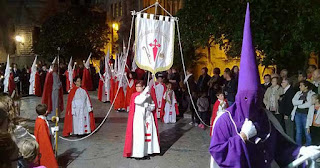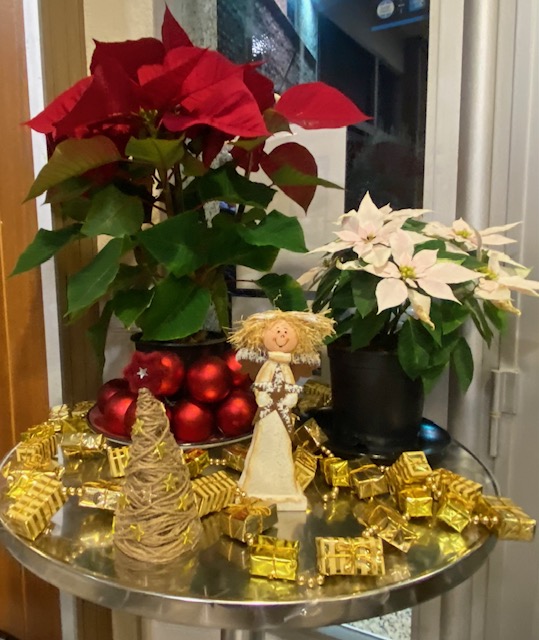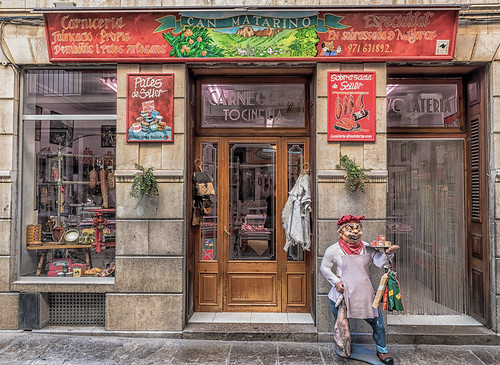HOLY WEEK – AS IT UNFOLDS
Holy Thursday – The Holy Mass of the Lord’s Supper followed by a procession
Thursday 24th March – The Holy Mass of the Lord’s Supper takes place at 7.00 p.m. in the Parròquia de Sant Bartomeu in the square in Soller. This is followed by a procession of the penitents around the City, which begins at approximately 9.30 p.m.
This is a very joyful Mass as the Church recalls the institution of the Eucharist as the true body and blood of Jesus Christ and the sacrament of Holy Communion. The priests wear white vestments, the altar is filled with flowers, the Gloria is sung and the bells are rung. The Liturgy of the Mass follows the events of the Passover and the Last Supper, including the Washing of the Feet. The Holy Eucharist is removed from the tabernacle in the main body of the Church and carried in procession through the Church to be transferred to the Chapel of Our Lady on the right hand side inside the Church. The atmosphere moves to one of quiet contemplation as we then recall the Agony in the Garden and the arrest and imprisonment of Jesus. The alter is stripped bare and crosses are removed. The faithful are then invited to continue Adoration of the Blessed Sacrament throughout the night, just as the disciples were invited to stay up with the Lord during his Agony in the Garden before his betrayal by Judas.
After this Mass, no Mass is celebrated again, or indeed bells rung, until the Easter Vigil celebrates and proclaims Christ’s Resurrection.
In this way, the Holy Liturgy marks the beginning of the “Sacred Triduum” of Holy Week: the period of three days that begins this day and ends on Easter Sunday, commemorating the passion, death, burial and resurrection of Jesus. These are the holiest days in the Catholic Church.
Holy Thursday is sometimes called “Maundy Thursday” from the Latin word “mandatum” or “mandate.” This relates to the words from John 13:34: ‘A new commandment I give unto you, that ye love one another; as I have loved you, that ye also love one another.’ This shows the worth God ascribes to the humility of service and the need for cleansing, also revealed in the Washing of the Feet, which is acted out by Father Marià (and all Catholic priests in their parishes throughout the world) during the Liturgy, as he washes the feet of twelve of the congregation.
It is then Christ’s command to brotherly love and service both to God and our neighbour that we then bear witness to in the solemn and silent procession that takes place at approximately 9.30 p.m. following the Mass. To this extent, the procession is made up of groups of “brotherhoods” or “fraternities” (known as “confraries”in Catalan); and, in participating in the procession, all members of the brotherhoods display their commitment to do penance in order to be reconciled with God and, during the rest of the year, they perform acts of service within the community.
The different brotherhoods leave the Church in the main square, each carrying magnificent banners or “pasos” (floats), which are wooden structures bearing statues that recall different scenes from the Gospels related to the Passion of Christ and which reflect the particular devotion of each group. The “costaleros” are the members chosen to carry the floats. The brotherhoods have owned and preserved these “pasos” for many years. The procession is accompanied by the sound of slow and chilling drums. It follows a long route around the town and many people come out to witness it.









